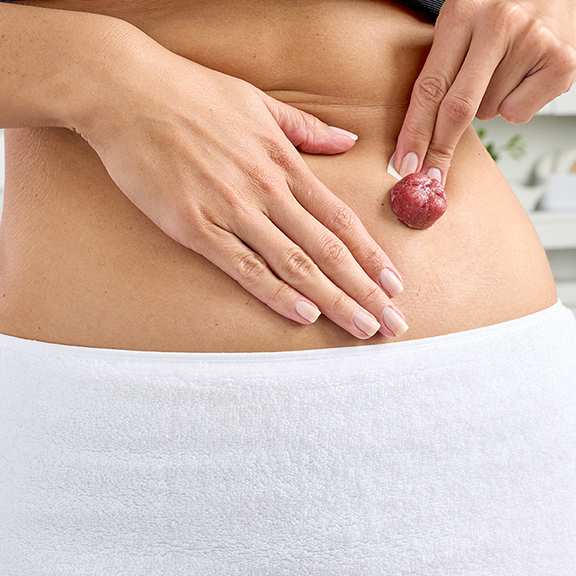How to Care for Your Peristomal Skin
One of the most important — and the toughest — parts of ostomy care is keeping the skin around your stoma healthy and intact. Even a small leak from your ostomy pouching system can cause painful skin irritation. When skin is damaged, it becomes harder to secure the pouching system, thus creating a cycle that can make skin problems worse. If you have sensitive skin, some ostomy products may cause irritation as well. This online peristomal skin assessment guide can help you understand what’s causing skin problems.
Common peristomal skin complications include contact irritant dermatitis, folliculitis, fungal rash and skin infections. Practicing a regular skincare routine can help prevent these problems. You can shower and bathe as you normally would, with your pouch on or off — soap and water won’t flow into the stoma. If you shower with only the skin barrier, and you find that it’s losing adhesion, it’s best to either keep the pouch on or remove the entire pouching system.
This quick guide will show you how to care for the skin around your stoma.

Step 1: Clean the peristomal skin every time you change your skin barrier
Clean the skin as your healthcare provider recommends, either with water or with a gentle soap. Rinse and dry the skin. Don’t use any alcohol, lotions, or oils on your skin.

Step 2: Inspect your stoma and surrounding skin
Your stoma should appear moist, shiny, and pink or red. If the stoma has changed in appearance, or if the skin around the stoma looks raw, irritated, bulging, or discolored, call your healthcare provider.

Step 3: Take steps to address any skin issues
If your skin is red and raw because it has come into contact with stoma output, you should evaluate the fit of your pouching system and your ostomy care routine. You may need to switch products or use ostomy accessories, such as stoma paste or a barrier ring, to improve the fit.
If your peristomal skin is red and itchy in a certain shape or pattern, you may be having a reaction to your ostomy products. Try changing your skin barrier or other products to see if the irritation improves.
Stoma powder can be used on skin that is weepy or raw to dry it out and allow it to heal. The crusting technique, which combines stoma powder and barrier film, can provide even more protection for damaged skin.
Read more: How to Crust Around Your Stoma

